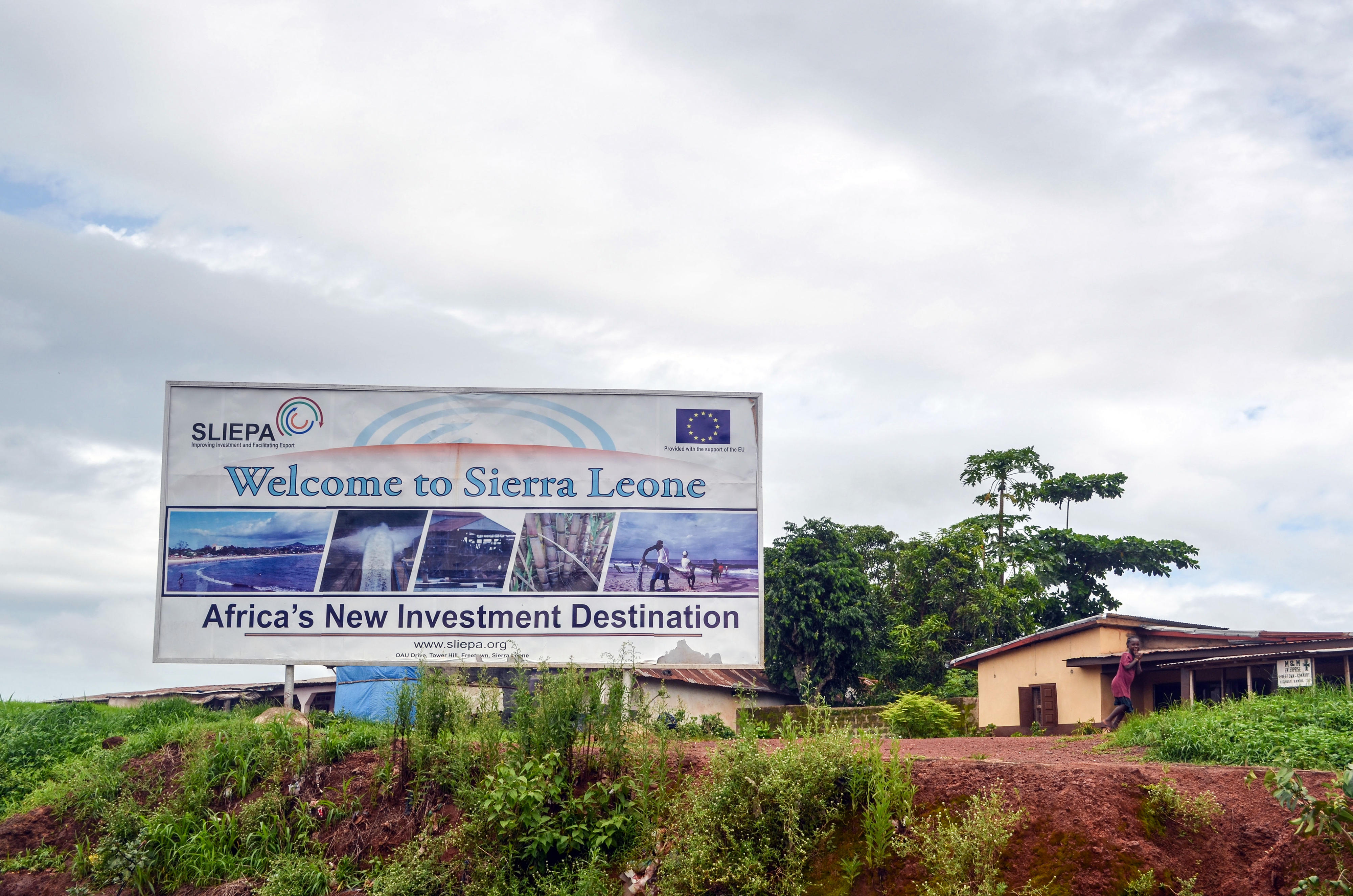Advertising sign at the border of Sierra Leone
Copyright© jbdodane, via flickr, CC BY-NC 2.0
Economic situation Great dependency on commodity exports and weak infrastructure
Sierra Leone is rich in natural resources (iron ore, diamonds, gold, bauxite, raw timber, coffee, cocoa), but the government is not able – and possibly not willing politically – to ensure that the wider population profits from these resources. Most people’s livelihoods depend on small and micro enterprises in the informal sector.
After the Ebola crisis, Sierra Leone witnessed a drop in economic growth of 20 per cent in 2015 – the effects of which can still be felt today. Since the COVID-19 pandemic in 2020, the economy has been in a critical state. Right now, development is also suffering from the impacts of Russia’s war of aggression against Ukraine. The International Monetary Fund (IMF) is predicting economic growth of 4.5 per cent in 2025 (January 2025 prediction). Towards the end of 2023, inflation rose to over 60 per cent and the government’s budget planning is not very credible. In the Heritage Foundation’s Index of Economic Freedom (External link) Sierra Leone fell to 163rd out of 184 countries in 2024 and its economy is now considered “repressed”.
Potential investors are deterred by the lack of legal certainty, in particular when it comes to land rights, and by the weak infrastructure. There are only a handful of paved highways and even in urban areas the transport routes are poorly developed. There is no centralised water supply, proper waste disposal or sewage system.
Only about a quarter of the population of Sierra Leone currently has access to electricity. The government has set itself the goal of improving energy supply and also wants to expand the use of solar energy and hydropower in pursuit of that goal. The majority of companies and governmental institutions rely on diesel generators. Private households primarily use local biomass (wood or charcoal) to meet their energy needs – resulting in deforestation and environmental degradation.
As at: 26/03/2024
